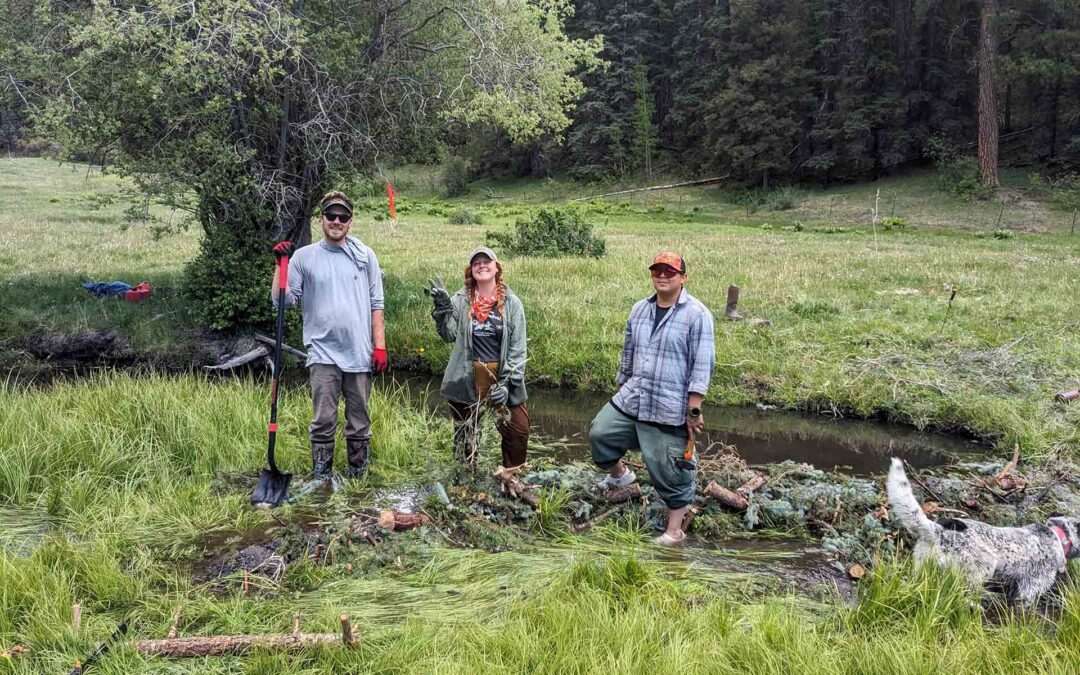Our crew building a beaver dam analogue with hand tools.
Bringing Life Back to Rio Cebolla: A Stream Once Shaped by Beavers, Now on the Mend
High in the Santa Fe National Forest, upstream from Seven Springs Hatchery, Rio Grande Return is leading another large-scale restoration effort to breathe life back into nine miles of the Rio Cebolla, a stream once enriched by beaver activity but now impoverished from decades of drought, grazing, wildfire, and the historical removal of its ecological architects (the beavers).
Our mission is bold yet simple: restore the stream’s connection to its floodplain, expand vital wetlands, and build the kind of resilient habitat that welcomes beavers back – and with them, the Rio Grande cutthroat trout and other sensitive and threatened species that depend on a thriving riparian ecosystem.
In 2023 and 2024, our crew installed nearly 200 beaver dam analogues (BDAs), Post-Assisted Log Structures (PALS), and Large Woody Debris Structures (LWD) to help the stream slow, spread, and soak into the surrounding land. We planted 120,000 willows and more than 1,000 cottonwoods along the banks and built several miles of wildlife-friendly fencing to keep livestock and elk out while allowing smaller animals to pass freely. Gates allow for easy access for fishing, hiking, and exploring.
Rio Grande Return did not do it alone. Over 55 volunteers from local organizations – including New Mexico Trout, Trout Unlimited (Bosque Chapter), New Mexico Lady Anglers, Santa Fe Master Gardeners, New Mexico Acequia Association, Forest Stewards Guild, and the Santa Fe National Forest – joined us to get their hands dirty planting willows and supporting this living landscape. RGR has also hosted several LTPBR build workshops here, including with members of the USFS Region 3 Watershed Program and BLM Aquatic Program staff.
Thanks to these efforts, the transformation is already visible. Rio Cebolla, with its year-round flow, shallow channel and gentle slope, responds quickly to restoration. The BDAs are raising the water table and boosting groundwater storage in the floodplain. Wetlands are expanding, willows are taking root, and the stream runs clear, with fish darting beneath woody structures and birdsong echoing across the lush corridor. This is what it looks like when a river begins to heal – and when a community comes together to help it thrive.
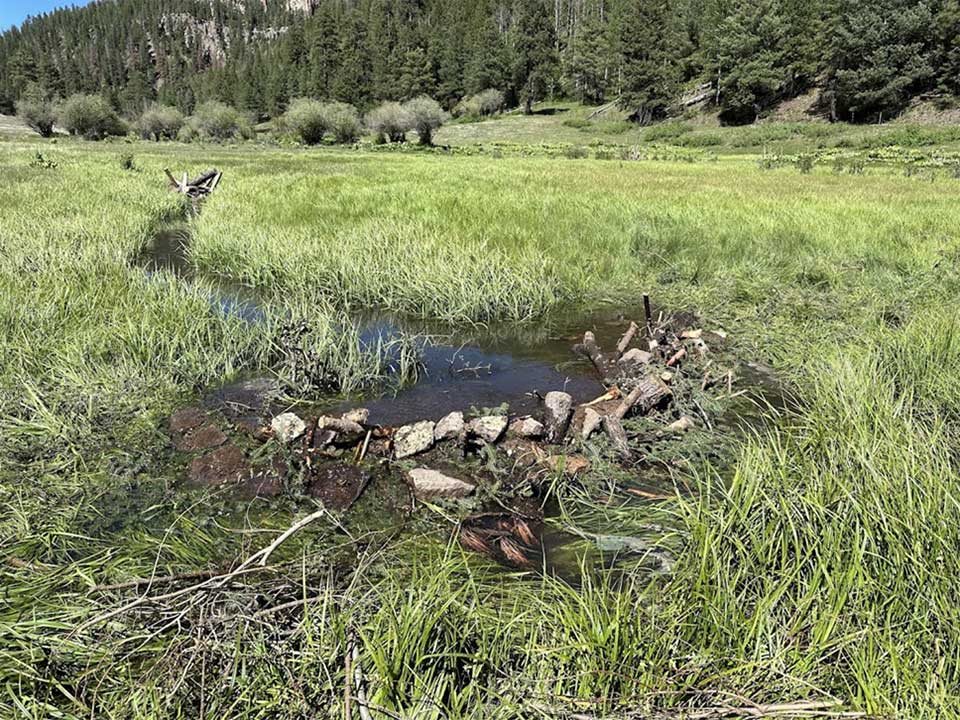
A beaver dam analogue made of blue spruce boughs, gravel and cobble, pinned in place with sharpened posts.
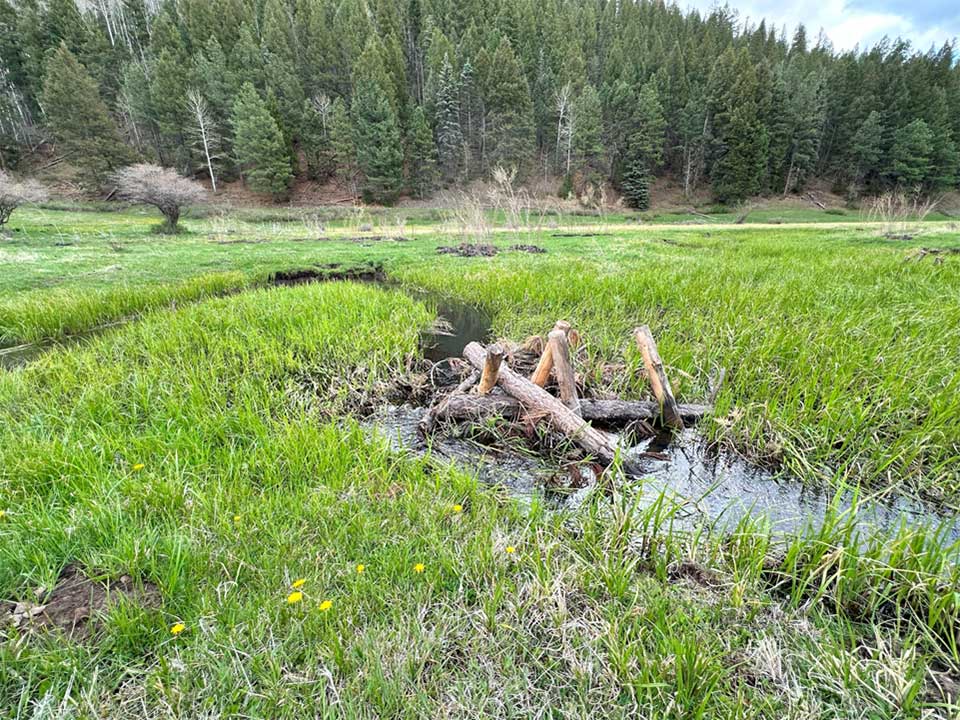
A post-assisted log structure. This structure will capture wood and sediment and provide fish habitat.
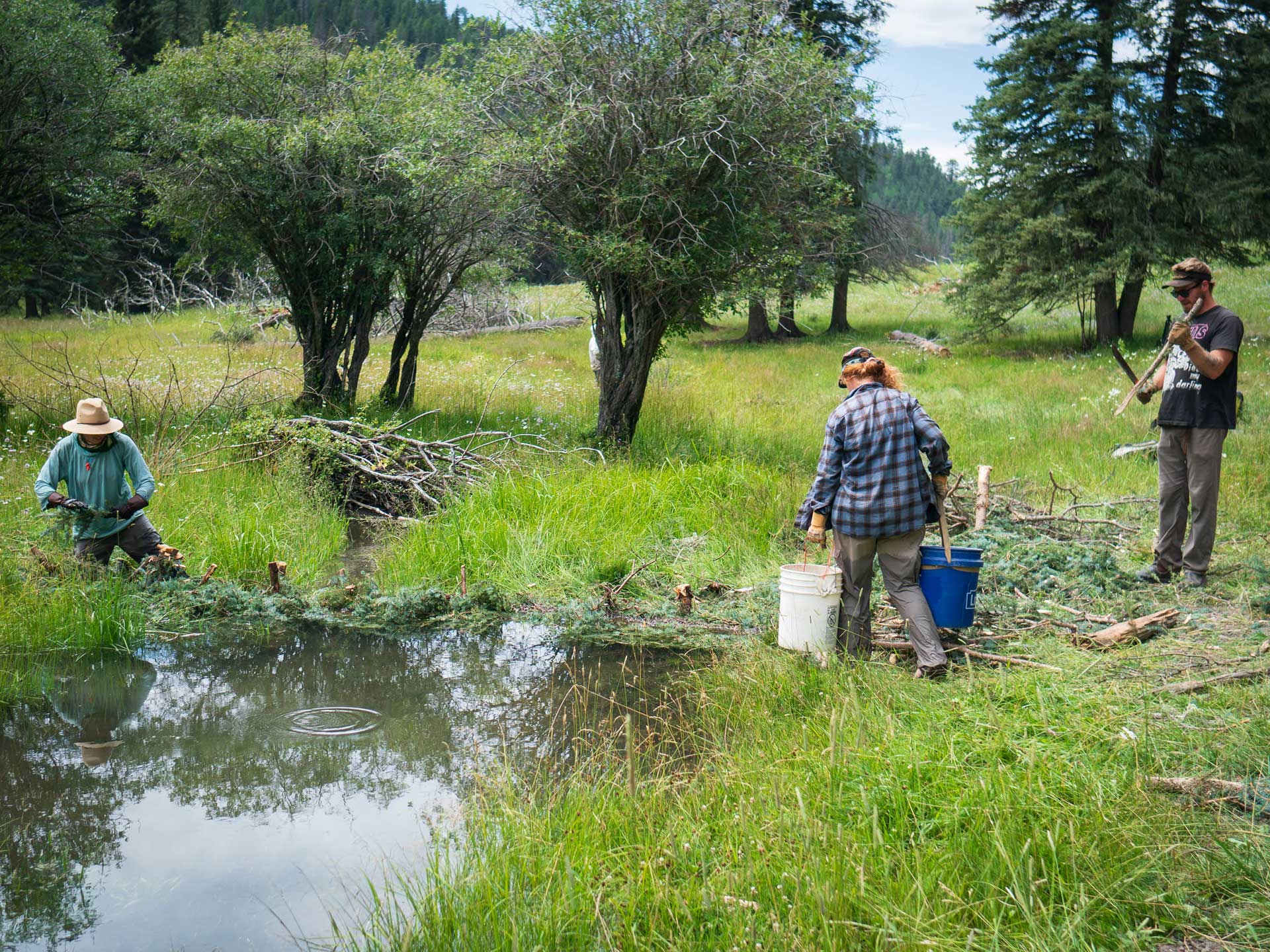
The crew carries sediment in buckets and sharpens posts to build a beaver dam analogue.

The crew augering holes to plant willow and cottonwood.
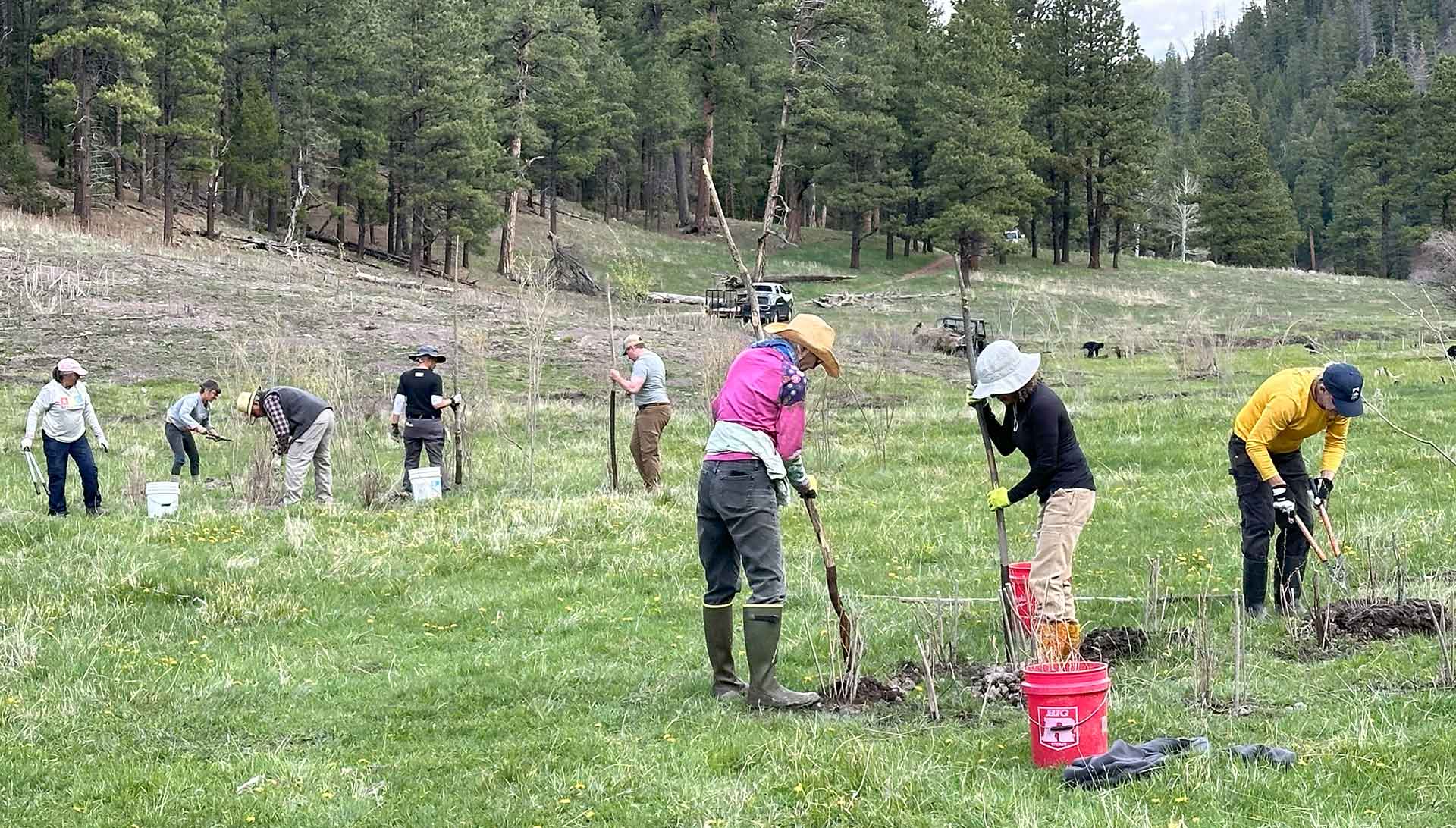
Volunteers planting willow poles.
